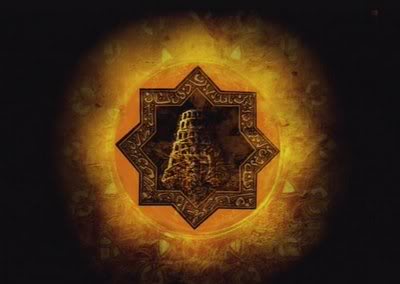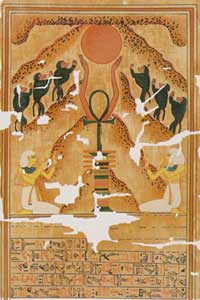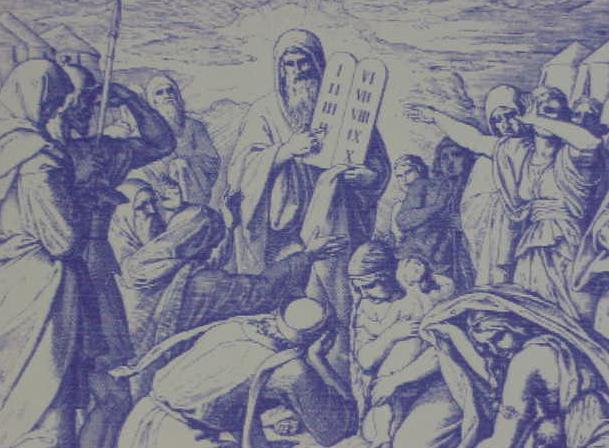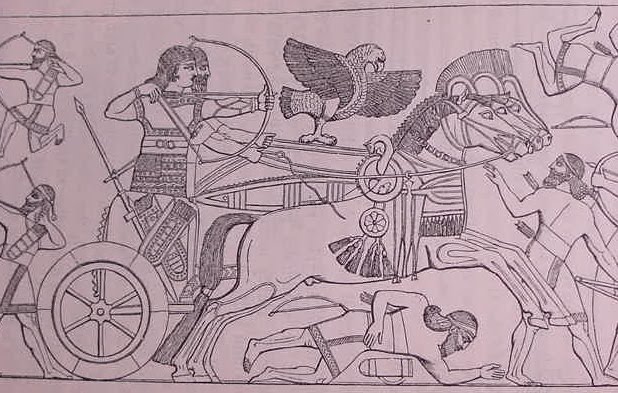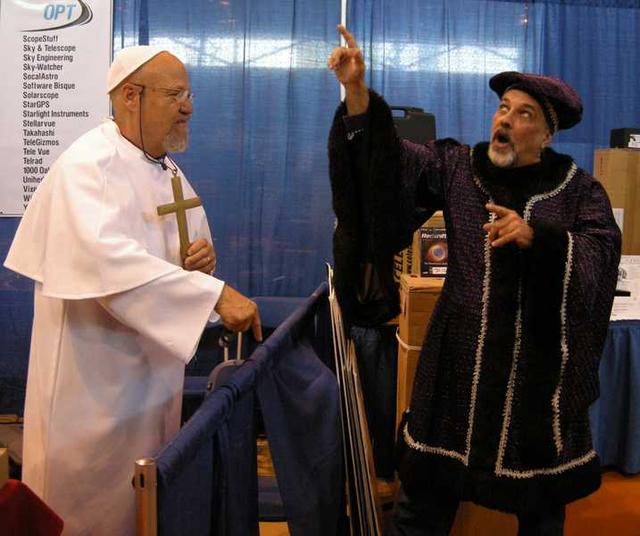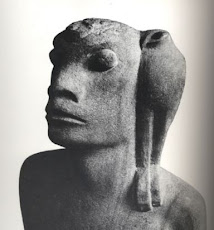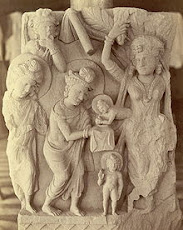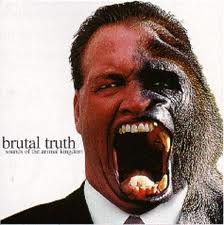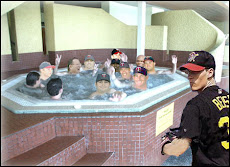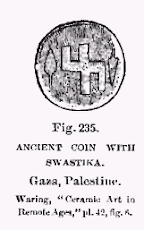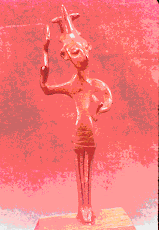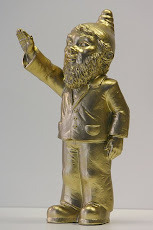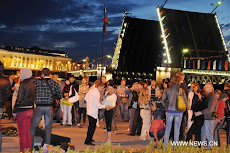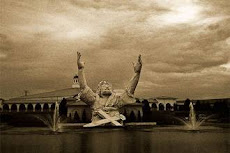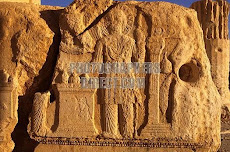Shaul-Paul was well connected too
Rufus Pudens, the Roman Senator married Priscilla, mother of the Apostle Paul through another marriage. Rufus and Pudens parented Rufus Pudens Pudentianna, Saint Pauls half-brother. Saint Paul, or Paul of Tarsus, is a Christian saint, who has lent his name to a number of places and things: Buildings and institutions Churches St Pauls Cathedral in London, England, designed by Christopher Wren St Pauls Cathedral (Macau) in Macau St Pauls Cathedral, in Melbourne.
Pudens was the husband of Claudia. They were identified with the Pudens and Claudia of Martial’s ‘Epigrams’ (iv. 13, xi. 53), and Claudia was held to be a British maiden and a daughter of a British chief named Cogidubnus (Martial, xi. 53, ‘CIL.’ vii. 11)
King of Siluria, was sainted by the early Church of Britain. "He first of the Cymry gave infants names, for before names were not given except to adults, and then from something characteristic in their bodies, minds, or manners." His brother Linus the Martyr, his sister Claudia and her husband Rufus Pudens aided the Apostle Paul in the Christian Church in Rome, as recorded in II Timothy 4:21 and Romans 16:13 (Rufus Pudens and St. Paul are shown to be half-brothers, with the same mother but different fathers. "His mother and mine." She thus appears to have been the mother of an elder son, Paul, by a Hebrew husband, and a younger son, Rufus, by a second marriage with a Roman Christian.)
Greet Prisca and Aquila, and the household of Onesiphorus. Erastus stayed in Corinth, but Trophimus I have left in Miletus sick. Do your utmost to come before winter. Eubulus greets you, as well as Pudens, Linus, Claudia, and all the brethren. The Lord Jesus Christ be with your spirit. Grace be with you. Amen (2 Timothy 4:19-22).
From all this we realize that Paul and Rufus Pudens Pudentius were half-brothers, each having the same mother. In turn, this made the British Princess Gladys, the emperor Claudius' adopted daughter, now known as Claudia Britannica Rufina Pudens Pudentius, sister-in-law the Apostle of the Gentiles! And lastly, through Gladys' adoption, Paul is the half-brother-son-in-law (if there can be such a thing) to the emperor Claudius!
St. Bernard, while gazing upon the glories of the Church, once commented, “Thus, wealth is drawn by ropes of wealth, thus money bringeth money...O vanity of vanities, yet no more vain than insane. The Church is resplendenr in her walls, beggarly in her poor. She clothese her stones in gold, and leaves her sons naked.”
Http://ww.asis.com/users/stag/royalsoap.html)
Jesus Had a Rich Family with Ties to the Herodians
According to the Gospel of Matthew ( Matthew 27:60), the garden and tomb were the private property of Jesus’ wealthy uncle, Joseph of Arimathea. Some said that Joseph was the uncle of Vigin Mary and therefore of Jesus. He was well placed as Nobilis Decurio, a minister of mines for the Roman empire, with direct access to Pilate himself.
Described as one who was “looking for the kingdom of God,” Mark 15:43. all four Gospels agree that Joseph was a member of the Sanhedrin which is the way bouleutēs, literally "counsellor", in Matthew 27:57 and Luke 23:50 is often interpreted, and a secret disciple of Jesus. (John 19:38) Scholars suggest his private garden and Jesus’ tomb was likely the Garden of Gethsemane, a favorite gathering place of the disciples with a clear view of the Temple on Mount Moriah or Sion (or Zion, the ancient name for Jerusalem).
When Pilate allowed Joseph's request he immediately purchased fine linen (Mark 15:46) and proceeded to Golgotha to take the body down from the cross. There, assisted by Nicodemus, he took the body and wrapped it in the fine linen, sprinkling it with the myrrh and aloes that Nicodemus had brought (John 19:39). Remember, the phoenix “maketh for itself a coffin of frankincense and myrrh and the other spices...”
It Was Finished Amazingly Fast!
According to the Gospel of Mark, immediately after the Crucifixion Joseph of Arimathea asked Pontius Pilate for Jesus’ body. Pilate was astonished that Jesus is dead so soon (Mk 15:44), it usually took several excruciatingly painful days for the crucified to perish. That was the point. The Gospels record that Jesus was suspended from the pillar at the sixth hour (noon), at the ninth hour (3 p.m.) he said he thirsted and was given a sponge soaked with vinegar by a Roman centurion (in fulfillment of Psalm 22:16 and Zecharia 12:10). When Jesus received the vinegar, which normally has a reviving effect, Jesus said, “It is finished: and bowed his head, and gave up the ghost.” (John 29:30) By nightfall he was declared dead. This is where medical doctors see trouble in the story of the Crucifixion. How is it possible, they wonder that a viral and powerful man such as Jesus (the image on the Shroud of Turin is that of man who was about 5’ 10” tall, 165 pounds) could have died so quickly?
Pilate also had reason to be surprised. Jesus’ legs were not even broken, the customary coup de grace which hastened death so that the dead bodies did not remain on the pillars on the Sabbath day. (John 19:31) The breaking of the legs prevented the crucified from straightening out their bodies. This assured suffocation within a few hours. Mallets broke the legs of the thieves. Jesus’ legs were left untouched because he was believed to be dead already. So how come he died so soon? Pilate conferred on this matter with a Roman centurion who is named Longinus in the apocryphal Book of Nicodemus. According to the Gospel of John, he was the centurion who thrust his lance into the side of Jesus to confirm his death. (John 19:33-35) Blood and water flowed out. None of the other Gospels mention Longinus’ action or the transformed blood and water of Christ. Yet in the Gospel of John this blood simultaneously verified Jesus was dead and that the faith of Christ is centered in his blood and water. Longinus became an early hero of the first Christians for his actions that Good Friday in April 2,000 years ago. If Jesus’ legs had been broken his body weight would have crushed his lungs causing him to die from asphyxiation. Most importantly, if Jesus’ legs had been broken, the prophecy of Exodus 12:46 “… a bone of him shall not be broken” would have been unfulfilled. Some say that in that moment, by his single action, Longinus held the destiny of the world in his hands. When he made the decision to pierce the side of Jesus he altered history.
Short Spear or Sponge?
Longinus the centurion and his Spear are the subject of immense mystery. According to legend, he was nearly blind. In the apocryphal Acta Pilata, Longinus was the supervisor of the Crucifixion.
Christian legend also claims Longinus was a secret follower of Jesus. He is the same centurion who, transformed by the events that transpired at the Crucifixion, praised Jesus as the true Son of God (Mk. 15:39)He was also the centurion who confirmed the death of Jesus to Pilate, and who then released the body of Jesus to another of Jesus’ secret disciples, Joseph of Arimathea. It has even been suggested that Longinus was the Roman soldier who administered the ‘vinegar’ to Jesus.
In their carefully researched work, The Jesus Conspiracy. The Turin Shroud and the Truth about the Resurrection. (1994, pp.252-3) Holger Kersten and Elmar Gruber note that an error of translation was made when the word hyssos (‘short spear’) was taken for hyssopos (‘hyssop’). Through this error it is revealed that, instead of a spear, Longinus held up a sponge soaked in a narcotic substance that put Jesus into a catatonic state, giving him the appearance of death.
Body or Corpse?
The trouble with the description of Longinus’ piercing Jesus’ side and the blood spurting out is that it is medically impossible. Corpses do not bleed. In order for blood to spurt out Jesus would have had to be at least partially alive. Additionally, it has been argued for centuries that Longinus’ piercing and the wound it caused was not sufficient to kill Jesus. The wounds that appear on the body in the Shroud of Turin tend to support this. So, the question continues to be asked: is the Gospel of John indicating that Jesus was still alive after the Crucifixion? Dead Sea Scroll scholar Hugh Schonfield The Passover Plot. A New Interpretation of Life and Death of Jesus (1965 p.168), and the authors of Holy Blood, Holy Grail (p.329) note that in the original Greek version of Mark’s Gospel, when Joseph asks for Jesus’ body he uses the word soma -- a word they propose applied to a living body. Pilate responds in the affirmative, but uses the word ptoma -- which means “corpse.” This is a perplexing state of affairs. Given the two different words, soma and ptoma, did Joseph receive a living or a dead body? This is the vital question of Christianity. 1 Corinthinians asks “If Christ be not risen, then is our preaching in vain, and your faith is also vain?” John’s Gospel says that, along with Nicodemus, Joseph pulled Jesus’ mangled body from the pillar. Without the knowledge or involvement of any of the other apostles they rushed the body to Joseph’s garden and went immediately to work. The two men treated the open cuts and wounds with a sticky gel made from over 100 pounds of aloe, myrrh and other medicinal herbs. They wrapped his body in a linen shroud, and placed it in Joseph’s private tomb, sealing it with a large rolling rock. Were they preparing Jesus’ body for burial or healing the massive wounds? Joseph came from Arimathea near the Samarian border. He returned there after the Crucifixion, suggesting he lived there.
The question thus arises:
Why is Joseph’s family burial tomb in Jerusalem?
Especially in a location so conveniently located to the site of Jesus’ Crucifixion?
Was his burial place located there because Joseph considered Jerusalem sacred?
Or, knowing that Jesus’ execution was imminent, unavoidable and indeed necessary for the fulfillment of prophecy, was this site’s proximity to the site of the Crucifixion pre-selected as part of an elaborate conspiracy for as a recovery area?
Arimathea is often held to be another name for Ramathaim-Zophim in Ephraim, the birth-place of Samuel, where David came to Samuel. (1 Sam. 1:1, 19), Others identify it with Ramlah in Dan, or Ramah in Benjamin. (Matt. 2:18)
Gospel of Nicodemus
The Gospel of Nicodemus, a text appended to the Acts of Pilate, provides additional, though even more mythologized, details. After Joseph asked for the body of Christ from Pilate, and prepared the body with Nicodemus' help, Christ's body was delivered to a new tomb that Joseph had built for himself. In the Gospel of Nicodemus, the Jewish elders express anger at Joseph for burying the body of Christ in the following exchange:
And likewise Joseph also stepped out and said to them: Why are you angry against me because I begged the body of Jesus? Behold, I have put him in my new tomb, wrapping in clean linen; and I have rolled a stone to the door of the tomb. And you have acted not well against the just man, because you have not repented of crucifying him, but also have pierced him with a spear.
—Gospel of Nicodemus. Translated by Alexander Walker.
Tuesday, September 23, 2008
Saturday, September 20, 2008
Jesus Was a Very Rich Man. Pt.2
“The only pagan contamination in Israel was among the very rich, inspired by self-interest or snobbery, and there were not many of these” (Daniel Rops, Jesus and his Times. 1954, p.408)
And was it always said that the manner of Jesus' death was crucifixion? Apparently not. Here is what is written in Baraitha Bab. Sanhedrin 43a:
On the eve of Passover Yeshu was hanged. For forty days before the execution took place, a herald went forth and cried, "He is going forth to be stoned because he has practiced sorcery and enticed Israel to apostasy. Any one who can say anything in his favour, let him come forward and plead on his behalf." But since nothing was brought forward in his favour he was hanged on the eve of the Passover! - Ulla retorted: Do you suppose that he was one for whom a defence could be made? Was he not a Mesith [enticer], concerning him Scripture says, Neither shalt though spare, neither shalt thou conceal him? With Yeshu however it was different, for he was connected with the government for royalty [i.e., influential]. Our Rabbis taught: Yeshu had five disciples, Matthai, Nakai, Nezer, Buni, and Todah.
How was Jesus connected with the Government?
King Hezekia encouraged by prophet Isaiah restored the celebration of the Passover and destroyed the “brazen serpent” crafted long-ago by Moses in the wilderness which had become an object of idolatrous worship.
The Gnostic Jesus asks Nicodemus, a ruler of the Jews (John 3: 14): “And as Moses in the desert lifted the serpent on the pole, the Son of Man must be lifted up. That whosoever believeth in him should not perish, but have eternal life”. True, Moses set a “fiery serpent upon a pole” in order to calm panic of the people bitten by fiery serpents” (Num. 21:8). Obviously, this episode of the brazen serpent matches that of the Golden Calf and both events confirm that the Jews who left Egypt were still attached to the symbols of the Egyptian religion that they must have professed during centuries of their bondage. The brazen serpent called Nehushtan continued to be venerated by the people until it was destroyed by King Hezekiah (2 Ki 18.4). But Jesus seems not to have known that or simply ignored the fact of destruction of the pagan religious symbol. His mindset reminds strongly the mindset of Pope Pius II who believed that the Roman Empire had fallen because the scholars had deserted paganism for the Papacy. A pre-Christian relief from Cyprus shows a combination of serpents, crosses and swastikas. Recall that Philistines (or Palestinians according to KJV) came to Egypt and Canaan from the Mediterranean islands. The Capernaum “synagogue” which, according to the Gospels, was built by a Roman officer and was used by Jesus to preach, had the walls adorned with the perennial solar symbol, swastika.In 167 BC Hellenized Jews cooperated with Antiochus IV to sacrifice pigs to Dionysus in the Temple of Jerusalem.
A strange but related story is told in Acts 28:1-6; in this story the apostle Paul is visiting the 9-mile-long island Melita (Malta), a center of serpent-soul worship beneath the southern tip of Italy. The underworld of the gods, it was claimed, was accessed from this island. Paul is bit by a serpent or viper, “which came out of the heat and fastened on his hand” (similarly the golden calf came out of the heat). But Paul shook off the beast into the fire, and felt no harm. The Maltese said he was a god.
This collaboration with the Herodians and their political tool the Sanhedrin to promote the faith in immortality was what the Romans needed in order to continue the occupation of Judea. Everywhere attention to Rome and the real situation in Palestine were deflected to otherwordly concerns. The New Testament seems to be a sort of fairytale situated in a very bloody, turbulet time.
Can you imagine the better pro-Roman propaganda that the one preached in the Sermon on the Mountain: “Ye have heard that it hath been said (Lev. 19:18), Thou shalt love thy neighbor, and hate thine enemy. But I say unto you, Love your enemies, bless them that curse you, do good to them that hate you, and pray for them which despitefully use you, and persecute you; that ye may be the children of Your Father who is in heaven: for he makes his sun rise on the evil and the good, and sendeth rain on the just and on the unjust' (Mt. 5:43-45). The passage quotes Lev 19.18, 'love your neighbor as yourself', and then it attributes to others the reverse, 'hate your enemy'. The second half is not a quotation from the Bible.
The impression that Jesus was a poor man, and even homeless is supported by the Gospel of Matthew (8:20) where Jesus says about himself: “The foxes have holes and the birds of the air have nests, but I (the Son of man) hath not where to lay his head.” The inspiration for this verse is very revealing. 130 years before Christ Tiberius Gracchus such a thought for the whole proletariat of Rome: “The wild beasts of Italy have their holes and their lairs, in which they rest, but the men that fight and die for Italy's power have nothing but air and light, because this they can not be robbed of. They roam with their wives and children without house and home.” Interestingly, a early Christian mosaic depicts Jesus wearing uniform of a Roman legionary.
Let me remind in this contxt the pertinent observation by Karl Kautsky in his Foundations of Christianity: “Compare the sermon on the Mount in Luke and in matthew, which is later. In the first it is still a glorification of the poor and a damning of the rich. By Matthew's time this had become a touchy subject for many Christians, and the Gospel acxcording to Matthew boldly turns the poor who are blesed into the poor of spirit (simpletons), and leaves the damning of the rich out altogether.”
Who Pays the Piper Calls the Piper's tune
“For unto every one that hath shall be given, and he shall have abundance; but from him that hath not shall be taken away even that which he hath. Cast ye unprofitable servant into outer darkness: there shall be weeping and gnashing of teeth.” (Mt 25: 14-30) This excellent summary of market operations was expressed by Jesus at a banquet he partook of in the home of a rich taxcollector. And don't forget "Give to the emperor the things that are the emperor's, and to God the things that are God's." (Mt. 12:17; Lk 20:26). Jesus was not leading riots against Herod's tax collectors, like he was doing at the Jerusalem Temple, he was sharing meals with them.
Jesus doesn't seem to have thought of ending poverty. He took for granted, like all the ancients, that a slave's duty is to serve his master well; “blessed is the slave whom his master, returning, finds performing his charge” (Mt. 24:46). He is not concerned to attack existing economic or political institutions, on the contrary, he condemns those impatient, ardent souls who would “take the Kingdom of Heaven by storm.”
John mentions Jesus' disciple who was known unto the High Priest: “And (the disciple) went in with Jesus into the palace of the high priest. But Peter stood at the door without. Then went out that other disciple, which was known unto the High Priest, and spake unto her that kept the door, and brought in Peter.” (John 18:15-16)
By the time Jesus was born there were a number of factors that led to the corruption of Sanhedrin. First, there was the outside influence of the Romans. Herod, for example, had killed members of the Sanhedrin who challenged his wicked behavior. He also filled the supreme court with men who were willing to cooperate with his corrupt manner of conducting business. Under the Romans the Sanhedrin more or less adopted a form of political pragmatism to get along with their Roman overlords. In AD 6 Judea was made a Roman province. Under this political situation the Sanhedrin and the high priest were “granted almost exclusive control of the internal affairs of the nation ... and, so long as public order was maintained and tax revenues were forthcoming, they were content for national matter to be under the control of the Jerusalem Sanhedrin. The Sanhedrin had great power but they were always ultimately answerable to the Roman governor. (Brian Schwertley, The Ecclesiastical Trial, Part 2: Before the Sanhedrin , www.reformedonline.com/)
Luke's accurate and relatively abundant knowledge about the Herod family may be due to his acquaintance with certain people who had close contact with the family. He mentions Joanna the wife of one of Antipas's stewards, among the well-to-do women who supported Jesus and his disciples during their itinerant ministry, and his reference to Manaen 'companion' or 'courtier' of Herod, the tetrarch who became one of the leading teachers and prophets in the church of Syrian Antioch about AD 47 is also of interest. Luke must have found in Manaen a valuable informant on the contacts of Antipas and his relatives with the early Christian story.
Manaen is also mentioned in Acts 13:1-3: “Now there were in the church that was at Antioch certyain prophets and teachers; as Barnabas, and Simeon that was called Niger, and Lucius of Cyrene, and Manaen, which has ben brought up with Herod the tetrarch, and Saul...” The rulers of the Herod dynasty were brought up in Rome.
And was it always said that the manner of Jesus' death was crucifixion? Apparently not. Here is what is written in Baraitha Bab. Sanhedrin 43a:
On the eve of Passover Yeshu was hanged. For forty days before the execution took place, a herald went forth and cried, "He is going forth to be stoned because he has practiced sorcery and enticed Israel to apostasy. Any one who can say anything in his favour, let him come forward and plead on his behalf." But since nothing was brought forward in his favour he was hanged on the eve of the Passover! - Ulla retorted: Do you suppose that he was one for whom a defence could be made? Was he not a Mesith [enticer], concerning him Scripture says, Neither shalt though spare, neither shalt thou conceal him? With Yeshu however it was different, for he was connected with the government for royalty [i.e., influential]. Our Rabbis taught: Yeshu had five disciples, Matthai, Nakai, Nezer, Buni, and Todah.
How was Jesus connected with the Government?
King Hezekia encouraged by prophet Isaiah restored the celebration of the Passover and destroyed the “brazen serpent” crafted long-ago by Moses in the wilderness which had become an object of idolatrous worship.
The Gnostic Jesus asks Nicodemus, a ruler of the Jews (John 3: 14): “And as Moses in the desert lifted the serpent on the pole, the Son of Man must be lifted up. That whosoever believeth in him should not perish, but have eternal life”. True, Moses set a “fiery serpent upon a pole” in order to calm panic of the people bitten by fiery serpents” (Num. 21:8). Obviously, this episode of the brazen serpent matches that of the Golden Calf and both events confirm that the Jews who left Egypt were still attached to the symbols of the Egyptian religion that they must have professed during centuries of their bondage. The brazen serpent called Nehushtan continued to be venerated by the people until it was destroyed by King Hezekiah (2 Ki 18.4). But Jesus seems not to have known that or simply ignored the fact of destruction of the pagan religious symbol. His mindset reminds strongly the mindset of Pope Pius II who believed that the Roman Empire had fallen because the scholars had deserted paganism for the Papacy. A pre-Christian relief from Cyprus shows a combination of serpents, crosses and swastikas. Recall that Philistines (or Palestinians according to KJV) came to Egypt and Canaan from the Mediterranean islands. The Capernaum “synagogue” which, according to the Gospels, was built by a Roman officer and was used by Jesus to preach, had the walls adorned with the perennial solar symbol, swastika.In 167 BC Hellenized Jews cooperated with Antiochus IV to sacrifice pigs to Dionysus in the Temple of Jerusalem.
A strange but related story is told in Acts 28:1-6; in this story the apostle Paul is visiting the 9-mile-long island Melita (Malta), a center of serpent-soul worship beneath the southern tip of Italy. The underworld of the gods, it was claimed, was accessed from this island. Paul is bit by a serpent or viper, “which came out of the heat and fastened on his hand” (similarly the golden calf came out of the heat). But Paul shook off the beast into the fire, and felt no harm. The Maltese said he was a god.
This collaboration with the Herodians and their political tool the Sanhedrin to promote the faith in immortality was what the Romans needed in order to continue the occupation of Judea. Everywhere attention to Rome and the real situation in Palestine were deflected to otherwordly concerns. The New Testament seems to be a sort of fairytale situated in a very bloody, turbulet time.
Can you imagine the better pro-Roman propaganda that the one preached in the Sermon on the Mountain: “Ye have heard that it hath been said (Lev. 19:18), Thou shalt love thy neighbor, and hate thine enemy. But I say unto you, Love your enemies, bless them that curse you, do good to them that hate you, and pray for them which despitefully use you, and persecute you; that ye may be the children of Your Father who is in heaven: for he makes his sun rise on the evil and the good, and sendeth rain on the just and on the unjust' (Mt. 5:43-45). The passage quotes Lev 19.18, 'love your neighbor as yourself', and then it attributes to others the reverse, 'hate your enemy'. The second half is not a quotation from the Bible.
The impression that Jesus was a poor man, and even homeless is supported by the Gospel of Matthew (8:20) where Jesus says about himself: “The foxes have holes and the birds of the air have nests, but I (the Son of man) hath not where to lay his head.” The inspiration for this verse is very revealing. 130 years before Christ Tiberius Gracchus such a thought for the whole proletariat of Rome: “The wild beasts of Italy have their holes and their lairs, in which they rest, but the men that fight and die for Italy's power have nothing but air and light, because this they can not be robbed of. They roam with their wives and children without house and home.” Interestingly, a early Christian mosaic depicts Jesus wearing uniform of a Roman legionary.
Let me remind in this contxt the pertinent observation by Karl Kautsky in his Foundations of Christianity: “Compare the sermon on the Mount in Luke and in matthew, which is later. In the first it is still a glorification of the poor and a damning of the rich. By Matthew's time this had become a touchy subject for many Christians, and the Gospel acxcording to Matthew boldly turns the poor who are blesed into the poor of spirit (simpletons), and leaves the damning of the rich out altogether.”
Who Pays the Piper Calls the Piper's tune
“For unto every one that hath shall be given, and he shall have abundance; but from him that hath not shall be taken away even that which he hath. Cast ye unprofitable servant into outer darkness: there shall be weeping and gnashing of teeth.” (Mt 25: 14-30) This excellent summary of market operations was expressed by Jesus at a banquet he partook of in the home of a rich taxcollector. And don't forget "Give to the emperor the things that are the emperor's, and to God the things that are God's." (Mt. 12:17; Lk 20:26). Jesus was not leading riots against Herod's tax collectors, like he was doing at the Jerusalem Temple, he was sharing meals with them.
Jesus doesn't seem to have thought of ending poverty. He took for granted, like all the ancients, that a slave's duty is to serve his master well; “blessed is the slave whom his master, returning, finds performing his charge” (Mt. 24:46). He is not concerned to attack existing economic or political institutions, on the contrary, he condemns those impatient, ardent souls who would “take the Kingdom of Heaven by storm.”
John mentions Jesus' disciple who was known unto the High Priest: “And (the disciple) went in with Jesus into the palace of the high priest. But Peter stood at the door without. Then went out that other disciple, which was known unto the High Priest, and spake unto her that kept the door, and brought in Peter.” (John 18:15-16)
By the time Jesus was born there were a number of factors that led to the corruption of Sanhedrin. First, there was the outside influence of the Romans. Herod, for example, had killed members of the Sanhedrin who challenged his wicked behavior. He also filled the supreme court with men who were willing to cooperate with his corrupt manner of conducting business. Under the Romans the Sanhedrin more or less adopted a form of political pragmatism to get along with their Roman overlords. In AD 6 Judea was made a Roman province. Under this political situation the Sanhedrin and the high priest were “granted almost exclusive control of the internal affairs of the nation ... and, so long as public order was maintained and tax revenues were forthcoming, they were content for national matter to be under the control of the Jerusalem Sanhedrin. The Sanhedrin had great power but they were always ultimately answerable to the Roman governor. (Brian Schwertley, The Ecclesiastical Trial, Part 2: Before the Sanhedrin , www.reformedonline.com/)
Luke's accurate and relatively abundant knowledge about the Herod family may be due to his acquaintance with certain people who had close contact with the family. He mentions Joanna the wife of one of Antipas's stewards, among the well-to-do women who supported Jesus and his disciples during their itinerant ministry, and his reference to Manaen 'companion' or 'courtier' of Herod, the tetrarch who became one of the leading teachers and prophets in the church of Syrian Antioch about AD 47 is also of interest. Luke must have found in Manaen a valuable informant on the contacts of Antipas and his relatives with the early Christian story.
Manaen is also mentioned in Acts 13:1-3: “Now there were in the church that was at Antioch certyain prophets and teachers; as Barnabas, and Simeon that was called Niger, and Lucius of Cyrene, and Manaen, which has ben brought up with Herod the tetrarch, and Saul...” The rulers of the Herod dynasty were brought up in Rome.
Saturday, September 13, 2008
Jesus Was a Very Rich Man. Pt.1
Early Christian “doctors” were constantly contradicting themselves as to when exactly “the Lord” died or “ascended to heaven” after “he” was resurrected. Two of the most powerful early bishops, Irenaeus and Papias recorded that Christ lived to be very old, flatly denying as 'heresy' the Gospel stories as to his crucifixion at about thirty years of age.” In one of the Warsaw churches there is a statue of a very old Jesus. The Poles commemoratred this strange fact in a saying: “U fary jest Pan Jezus stary.”
Saint Irenaeus (Greek: Ειρηναίος), (2nd century AD - c. 202 AD) was Bishop of Lugdunum in Gaul, Roman Empire (now Lyons, France). He was an early church father and apologist, and his writings were formative in the early development of Christian theology. He was a disciple of Saint Polycarp, who was said to be a disciple of Saint John the Evangelist.
But unlike John who introduced to his gospel the philosophical demiurge (Logos), Irenaus preferred to speak of the Son and the Spirit as the "hands of God". The world has been intentionally designed by God.
In addition to reversing the wrongs done by Adam, Irenaeus thinks of Christ as "recapitulating" or "summing up" human life.This means that Christ goes through every stage of human life, from infancy to old age, and simply by living it, sanctifies it with his divinity. Irenaeus argues that Christ did not die until he was older than conventionally portrayed.
Ireenaeus' theology can be better u.nderstood in the context of Clement's letter to the Corinthian church, which is one of the oldest Christian documents still in existence outside the New Testament.
Saint Clement I, also known as Pope Clement I, Saint Clement of Rome, or Clemens Romanus, was the fourth Pope and Bishop of Rome and is considered the first Apostolic Father of the early Christian church. There are only two extant Greek texts of 1 Clement. The oldest is in Codex Alexandrinus, which dates to the 5th century.
Clement:
Proof of the Resurrection – rebirth of the Phoenix! Not the Risen Christ!
"Let us understand, dearly beloved, how the Master continually showeth unto us the resurrection that shall be hereafter ...
Let us consider the marvellous sign which is seen in the regions of the east, that is, in the parts about Arabia.
There is a bird, which is named the phoenix. This, being the only one of its kind, liveth for five hundred years; and when it hath now reached the time of its dissolution that it should die, it maketh for itself a coffin of frankincense and myrrh and the other spices, into the which in the fulness of time it entereth, and so it dieth.
But, as the flesh rotteth, a certain worm is engendered, which is nurtured from the moisture of the dead creature and putteth forth wings. Then, when it is grown lusty, it taketh up that coffin where are the bones of its parent, and carrying them journeyeth from the country of Arabia even unto Egypt, to the place called the City of the Sun; and in the day time in the sight of all, flying to the altar of the Sun, it layeth them thereupon; and this done, it setteth forth to return. So the priests examine the registers of the times, and they find that it hath come when the five hundredth year is completed.
Do we then think it to be a great and marvelous thing, if the Creator of the universe shall bring about the resurrection of them that have served Him with holiness in the assurance of a good faith, seeing that He showeth to us even by a bird the magnificence of His promise?"
– The Epistle of St Clement to the Corinthians
According to Tertullian (Demurrer Against the Heretics 36 and 32:2) Clement was ordained by Peter.
Stoicism- the Backbone of the New Testament
The Stoics translated the pheonix myth into their philosophical jargon.. Stoicism consider the universe on a path to confragration.The end of the human history will meet its doom in a massive conflagration that will cause all things to return to their original state, exactly like the phoenix does. What makes the association with Christianity more interesting is tha tag at the end of Cicero's note on the subject when he declares that there will b e a conflagration so that “once again a new world may be created and the ordered universe be restored as before” (Early Stoic Physics, SVF II, 593). The same philosophy lies behind Big Bang.
The Stoic teaching that fiery breath (pneuma) infusing the physical body reverberates in Jesus' saying that The kingdom of heaven is like unto leaven, which a woman took, and hid in three 'measures of flour, till the whole was leavened.' (Lk 13:20-21). The Stoics contrasted soul and matter. These two principles are the active and passive. Matter is identified with the passive principle. Its complement, the active principle, is reason (LOGOS) or God and is held to extend through matter providing it with motion (like leaven in flour), form, and structure. Both principles are bodily or corporeal principles, but neither exists in isolation.
Pneuma was the “creative fire” of the cosmos, a pyr technikon. It had the status of divinity, and was equated with both god and cosmic reason. Ex 32:24 reports miraculous birth of Golden Calf out of creative fire: `Let any who have gold take it off'; so they gave it to me, and I threw it into the fire, and there came out this calf." The Vedic god Surya was a solar bull. According to the Assyrians, the bull was born of the sun. There is a link between this philosophy and the words of Jesus reported by John 3:14 (See below).
According to Zen theology the Buddha is “the deity of fire who seeks fire”. The cloven tongues of fire that appeared on the Apostles’ heads symbolized their enlightenment (buddha lit. means the enlightened one) – they became “jamad-agni”, those who knew the identity of god and fire. The cloven tongues of fire on the Apostles’ heads are logically connected with Jesus words (Lk. 12:49): “I am come to send fire on the earth…” Here Christ confronts the Jewish belief in personal God with the atheistic impersonal Absolute of the Aryan religion. Brahman is a neuter word which means energy or fire, or sun.
Paul wrote in 1 Cor 15:16-17: “For if the dead rise not, then is not Christ raised: And if Christ be not raised, your faith is vain...
On Feb. 9, 1989, A. Sakharov traveled to Italy where he spent more than an hour in private audience with the Pope John Paul II and received an honorary doctorate in astronomy from the University of Bologna. Rector of the University said on this occasion: “Not by chance has he (Sakharov) been placed in the company of Copernicus, of Galileo and of Giordano Bruno. Not by chance is the book chosen for the laureation of A. Sakharov The Dialogue of the Two Greatest Systems by Galileo: a choice meant to recall the spirit of liberty…” Or I would say, license to kill the remaining Jews...
In 1992 Pope John Paul said: “Galileo sensed in his scientific research the presence of the Creator who, stirring in the depth of his spirit, stimulated him, anticipating and assisting his intuitions.” (http://en.wikipedia.org/wiki/Galileo_Galilei)
Only disregard for teaching of the Bible and a blind admiration for the tradition of philosophical doctrines explains the view of Kepler that man’s ability to understand the mathematical law governing the universe enabled him to mirror God’s own thoughts and thus put him in special contact (mystical union) with the Creator of the Universe. (Cp. Jesus words: “My Father and I are one.” Jn. 10:30). Kepler's God was Plato's metaphysical God (Logos) who is a-historicist mathematician who eternally geometrizes.
The same God wrote for Galileo the Book of Nature. Galileo on the Book of Nature.“Philosophy is written in that very large book that is continually opened before our eyes (I mean the universe), but which is not understood unless first one studies the language and knows the characters in which it is written. The language of that book is mathematical and the characters are triangles, circles, and other geometric figures.” (Galileo Galilei: Pensieri, motti e sentenze; Florence, 1949) The Hindu Vishnu holds a disc or a rounded piece of gold in his hand. The Egyptian Ra wears a disc as a crown). Will future encyclicals be written in mathematical equations? The God on the front page of the Renaissance edition of the Vulgate wears a triangle on his head.
www.flickr.com/photos/19279530@N00/841587900/
special.lib.gla.ac.uk/exhibns/month/nov2007.html
www.iblistforums.com/viewtopic.php?t=115114...
http://flickr.com/photos/78957022@N00/392513034
Prof. A. Sakharov's Solar Phoenix
The Soviet physicist “proved” that the sun is an immortal god in his dogma of the “solar phoenix”, or strictly materialistic principle of the “spontaneous resurrection of energy (brahma) such as takes place in the sun's core.” And this scientific dogma explains the strange Latin expression "resurrexit” (“he has risen again”) which in nonscriptural references is used almost invariably and surrectio (“risen”) hardly ever. Resurrectio suggest natural process repeating itself time and again and not a “historical fact” as exemplified by the risen Jesus. The term resurrectio mirrors Plato’s cosmology which was cyclic, with periodic destruction and recreation of the universe in conjunction with various astronomical events. Sakharov wanted to undo Patriarch Nikon’s reform who in the 17th century dropped the part of the phrase concerning sanctification “by the Holy Spirit and by fire” because “fire” did not have sufficient textual warrant, and this offended those who believed that the Holy Sprit was Himself fire according to the Aryan dogma. Prof. Sakharov was a true Aryan “jamad-agni”, or a sage who knows the identity of god and fire.
And was it always said that the manner of Jesus' death was crucifixion? Apparently not. Here is what is written in Baraitha Bab. Sanhedrin 43a:
On the eve of Passover Yeshu was hanged. For forty days before the execution took place, a herald went forth and cried, "He is going forth to be stoned because he has practiced sorcery and enticed Israel to apostasy. Any one who can say anything in his favour, let him come forward and plead on his behalf." But since nothing was brought forward in his favour he was hanged on the eve of the Passover! - Ulla retorted: Do you suppose that he was one for whom a defence could be made? Was he not a Mesith [enticer], concerning him Scripture says, Neither shalt though spare, neither shalt thou conceal him? With Yeshu however it was different, for he was connected with the government for royalty [i.e., influential]. Our Rabbis taught: Yeshu had five disciples, Matthai, Nakai, Nezer, Buni, and Todah.
Saint Irenaeus (Greek: Ειρηναίος), (2nd century AD - c. 202 AD) was Bishop of Lugdunum in Gaul, Roman Empire (now Lyons, France). He was an early church father and apologist, and his writings were formative in the early development of Christian theology. He was a disciple of Saint Polycarp, who was said to be a disciple of Saint John the Evangelist.
But unlike John who introduced to his gospel the philosophical demiurge (Logos), Irenaus preferred to speak of the Son and the Spirit as the "hands of God". The world has been intentionally designed by God.
In addition to reversing the wrongs done by Adam, Irenaeus thinks of Christ as "recapitulating" or "summing up" human life.This means that Christ goes through every stage of human life, from infancy to old age, and simply by living it, sanctifies it with his divinity. Irenaeus argues that Christ did not die until he was older than conventionally portrayed.
Ireenaeus' theology can be better u.nderstood in the context of Clement's letter to the Corinthian church, which is one of the oldest Christian documents still in existence outside the New Testament.
Saint Clement I, also known as Pope Clement I, Saint Clement of Rome, or Clemens Romanus, was the fourth Pope and Bishop of Rome and is considered the first Apostolic Father of the early Christian church. There are only two extant Greek texts of 1 Clement. The oldest is in Codex Alexandrinus, which dates to the 5th century.
Clement:
Proof of the Resurrection – rebirth of the Phoenix! Not the Risen Christ!
"Let us understand, dearly beloved, how the Master continually showeth unto us the resurrection that shall be hereafter ...
Let us consider the marvellous sign which is seen in the regions of the east, that is, in the parts about Arabia.
There is a bird, which is named the phoenix. This, being the only one of its kind, liveth for five hundred years; and when it hath now reached the time of its dissolution that it should die, it maketh for itself a coffin of frankincense and myrrh and the other spices, into the which in the fulness of time it entereth, and so it dieth.
But, as the flesh rotteth, a certain worm is engendered, which is nurtured from the moisture of the dead creature and putteth forth wings. Then, when it is grown lusty, it taketh up that coffin where are the bones of its parent, and carrying them journeyeth from the country of Arabia even unto Egypt, to the place called the City of the Sun; and in the day time in the sight of all, flying to the altar of the Sun, it layeth them thereupon; and this done, it setteth forth to return. So the priests examine the registers of the times, and they find that it hath come when the five hundredth year is completed.
Do we then think it to be a great and marvelous thing, if the Creator of the universe shall bring about the resurrection of them that have served Him with holiness in the assurance of a good faith, seeing that He showeth to us even by a bird the magnificence of His promise?"
– The Epistle of St Clement to the Corinthians
According to Tertullian (Demurrer Against the Heretics 36 and 32:2) Clement was ordained by Peter.
Stoicism- the Backbone of the New Testament
The Stoics translated the pheonix myth into their philosophical jargon.. Stoicism consider the universe on a path to confragration.The end of the human history will meet its doom in a massive conflagration that will cause all things to return to their original state, exactly like the phoenix does. What makes the association with Christianity more interesting is tha tag at the end of Cicero's note on the subject when he declares that there will b e a conflagration so that “once again a new world may be created and the ordered universe be restored as before” (Early Stoic Physics, SVF II, 593). The same philosophy lies behind Big Bang.
The Stoic teaching that fiery breath (pneuma) infusing the physical body reverberates in Jesus' saying that The kingdom of heaven is like unto leaven, which a woman took, and hid in three 'measures of flour, till the whole was leavened.' (Lk 13:20-21). The Stoics contrasted soul and matter. These two principles are the active and passive. Matter is identified with the passive principle. Its complement, the active principle, is reason (LOGOS) or God and is held to extend through matter providing it with motion (like leaven in flour), form, and structure. Both principles are bodily or corporeal principles, but neither exists in isolation.
Pneuma was the “creative fire” of the cosmos, a pyr technikon. It had the status of divinity, and was equated with both god and cosmic reason. Ex 32:24 reports miraculous birth of Golden Calf out of creative fire: `Let any who have gold take it off'; so they gave it to me, and I threw it into the fire, and there came out this calf." The Vedic god Surya was a solar bull. According to the Assyrians, the bull was born of the sun. There is a link between this philosophy and the words of Jesus reported by John 3:14 (See below).
According to Zen theology the Buddha is “the deity of fire who seeks fire”. The cloven tongues of fire that appeared on the Apostles’ heads symbolized their enlightenment (buddha lit. means the enlightened one) – they became “jamad-agni”, those who knew the identity of god and fire. The cloven tongues of fire on the Apostles’ heads are logically connected with Jesus words (Lk. 12:49): “I am come to send fire on the earth…” Here Christ confronts the Jewish belief in personal God with the atheistic impersonal Absolute of the Aryan religion. Brahman is a neuter word which means energy or fire, or sun.
Paul wrote in 1 Cor 15:16-17: “For if the dead rise not, then is not Christ raised: And if Christ be not raised, your faith is vain...
On Feb. 9, 1989, A. Sakharov traveled to Italy where he spent more than an hour in private audience with the Pope John Paul II and received an honorary doctorate in astronomy from the University of Bologna. Rector of the University said on this occasion: “Not by chance has he (Sakharov) been placed in the company of Copernicus, of Galileo and of Giordano Bruno. Not by chance is the book chosen for the laureation of A. Sakharov The Dialogue of the Two Greatest Systems by Galileo: a choice meant to recall the spirit of liberty…” Or I would say, license to kill the remaining Jews...
In 1992 Pope John Paul said: “Galileo sensed in his scientific research the presence of the Creator who, stirring in the depth of his spirit, stimulated him, anticipating and assisting his intuitions.” (http://en.wikipedia.org/wiki/Galileo_Galilei)
Only disregard for teaching of the Bible and a blind admiration for the tradition of philosophical doctrines explains the view of Kepler that man’s ability to understand the mathematical law governing the universe enabled him to mirror God’s own thoughts and thus put him in special contact (mystical union) with the Creator of the Universe. (Cp. Jesus words: “My Father and I are one.” Jn. 10:30). Kepler's God was Plato's metaphysical God (Logos) who is a-historicist mathematician who eternally geometrizes.
The same God wrote for Galileo the Book of Nature. Galileo on the Book of Nature.“Philosophy is written in that very large book that is continually opened before our eyes (I mean the universe), but which is not understood unless first one studies the language and knows the characters in which it is written. The language of that book is mathematical and the characters are triangles, circles, and other geometric figures.” (Galileo Galilei: Pensieri, motti e sentenze; Florence, 1949) The Hindu Vishnu holds a disc or a rounded piece of gold in his hand. The Egyptian Ra wears a disc as a crown). Will future encyclicals be written in mathematical equations? The God on the front page of the Renaissance edition of the Vulgate wears a triangle on his head.
www.flickr.com/photos/19279530@N00/841587900/
special.lib.gla.ac.uk/exhibns/month/nov2007.html
www.iblistforums.com/viewtopic.php?t=115114...
http://flickr.com/photos/78957022@N00/392513034
Prof. A. Sakharov's Solar Phoenix
The Soviet physicist “proved” that the sun is an immortal god in his dogma of the “solar phoenix”, or strictly materialistic principle of the “spontaneous resurrection of energy (brahma) such as takes place in the sun's core.” And this scientific dogma explains the strange Latin expression "resurrexit” (“he has risen again”) which in nonscriptural references is used almost invariably and surrectio (“risen”) hardly ever. Resurrectio suggest natural process repeating itself time and again and not a “historical fact” as exemplified by the risen Jesus. The term resurrectio mirrors Plato’s cosmology which was cyclic, with periodic destruction and recreation of the universe in conjunction with various astronomical events. Sakharov wanted to undo Patriarch Nikon’s reform who in the 17th century dropped the part of the phrase concerning sanctification “by the Holy Spirit and by fire” because “fire” did not have sufficient textual warrant, and this offended those who believed that the Holy Sprit was Himself fire according to the Aryan dogma. Prof. Sakharov was a true Aryan “jamad-agni”, or a sage who knows the identity of god and fire.
And was it always said that the manner of Jesus' death was crucifixion? Apparently not. Here is what is written in Baraitha Bab. Sanhedrin 43a:
On the eve of Passover Yeshu was hanged. For forty days before the execution took place, a herald went forth and cried, "He is going forth to be stoned because he has practiced sorcery and enticed Israel to apostasy. Any one who can say anything in his favour, let him come forward and plead on his behalf." But since nothing was brought forward in his favour he was hanged on the eve of the Passover! - Ulla retorted: Do you suppose that he was one for whom a defence could be made? Was he not a Mesith [enticer], concerning him Scripture says, Neither shalt though spare, neither shalt thou conceal him? With Yeshu however it was different, for he was connected with the government for royalty [i.e., influential]. Our Rabbis taught: Yeshu had five disciples, Matthai, Nakai, Nezer, Buni, and Todah.
Subscribe to:
Comments (Atom)



















































































































































































































































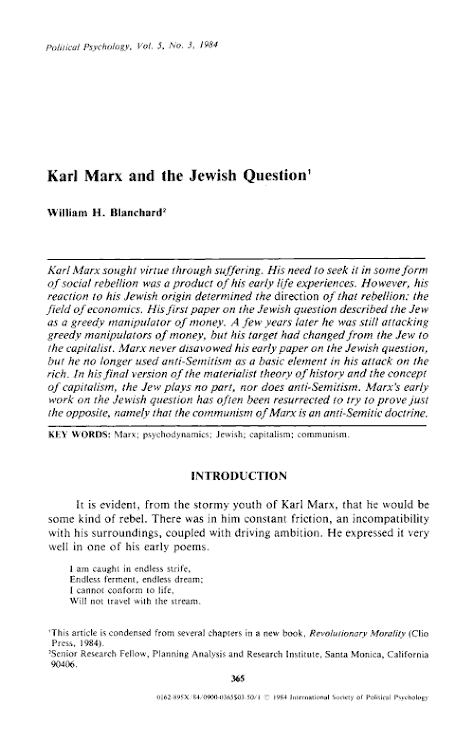




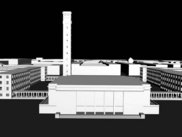






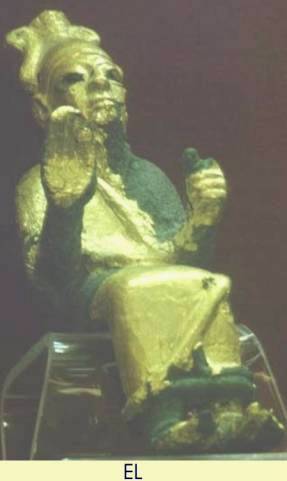






























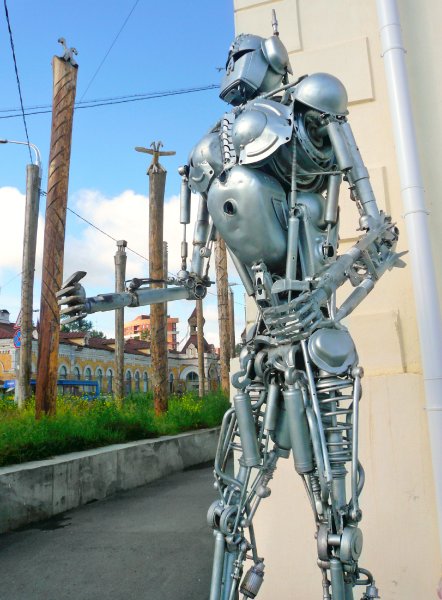


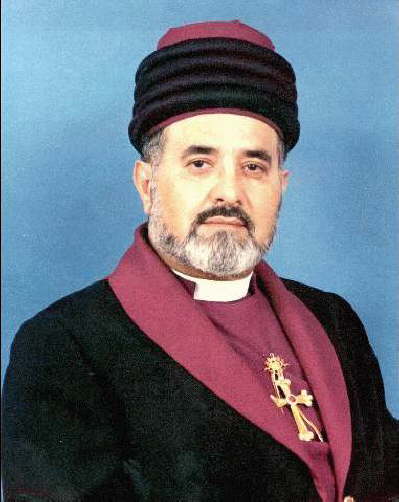+Anniversay+Dinner.jpg)





